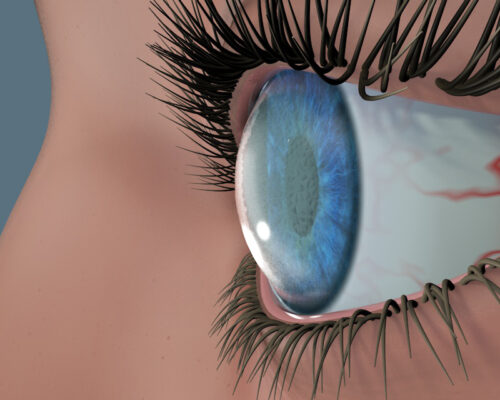Fuchs endotheeldystrofie is een langzaam in ernst toenemende aandoening in beide ogen die ongeveer 4 keer vaker voorkomt bij vrouwen dan bij mannen. De aandoening manifesteert zich meestal op een leeftijd van 50-70 jaar, maar kan ook bij jongere patiënten voorkomen. Bij Fuchs endotheeldystrofie is sprake van een versnelde afname van het aantal endotheelcellen, die leidt tot een minder goed functionerend endotheel. Aangezien het endotheel de vochtbalans in het hoornvlies reguleert zal het hoornvlies door de verminderde functionaliteit van het endotheel gaan zwellen en minder transparant worden.
Fuchs endotheeldystrofie kenmerkt zich door de aanwezigheid van kleine uitstulpingen vanuit het membraan van Descemet (guttata) tussen de endotheelcellen in. Deze uitstulpingen bevinden zich aan de achterkant van het hoornvlies. Tijdens spleetlamponderzoek zijn ze te herkennen als kleine onregelmatigheden (lijkend op de schil van een sinaasappel) aan de achterzijde van het hoornvlies.


The cause of Fuchs endothelial dystrophy is not yet fully understood. It is often a familial disease (autosomal dominant inheritance). Furthermore, environmental factors (excessive sunlight, smoking, diabetes) appear to accelerate the process. The disease can also be exacerbated by eye surgery, like cataract surgery.
Initially, the disease does not cause any complaints. However, the guttata and oedema will eventually cause light dispersion, glare, reduced contrast and irregular and blurred vision. Vision is usually worse in the morning than during the rest of the day. Vision will be continuously impaired as the disease progresses. Other complaints may also occur at this time, like pain and increased tearing due to fluid blisters on the surface of the cornea.
To make a correct diagnosis, chart any changes to the disease and determine the right follow-up or treatment, several tests will be carried out during your visit to our outpatients’ clinic, like:
Fuchs endothelial dystrophy cannot be cured but it can be treated. In some cases (in the early stages) the symptoms can be reduced using eye drops or a cream (sodium chloride 5%) to help reduce swelling. The drops or cream extract moisture from the cornea and can thus reduce visual symptoms. If this is not sufficient, Fuchs can now also be treated surgically. In the Melles Cornea Clinic you will be treated using a posterior lamellar cornea transplant (endothelial keratoplasty), like DMEK. The affected posterior layer of the cornea (the endothelium and the Descemet membrane) is replaced by a donor membrane. The extent to which someone is limited in their daily lives is the primary factor when making a decision about a cornea transplant. You can find more information about the various surgical techniques under “Treatments”.